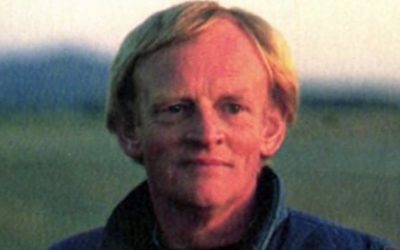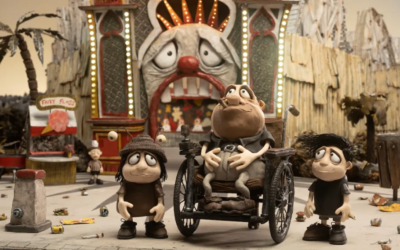First beginning this year on September 27th and expected to end on October 14th (making it one of the longer events of the yearly film festival circuit), the 62nd New York Film Festival, hosted by the nonprofit organization Film at Lincoln Center, has gained a small but significant amount of attention as of lately for its decision to include a handful of features – many of which are of the documentary variety – that have running times that are far longer than what the typical filmgoer is normally used to. These include Julia Lotkev’s “My Undesirable Friends: Part I – Last Air in Moscow”, which plays for a total of just under five-and-a-half hours long; two related films from Wang Bing – “Youth (Homecoming)” and “Youth (Hard Times)” – that each go on for over six hours each; and the longest of them all, Dimitris Athyridis’ “Exergue”, which makes those other films look like short subjects compared to its over fourteen hours running time. An exploration of an event in Greece known as Documenta, which many consider to be one of the world’s most noteworthy exhibitions of contemporary art, “Exergue” in particular was spoken fondly of by New York Film Festival art director Dennis Lim, who praised the film as “a film that’s not just about contemporary art, but really about the intersection of art and money and politics” after noting that “there’s something about the way that film really digs into this extremely fascinating process of making an art exhibition”.
For the record, “Exergue” was not shown in its entirety during a single screening, as a film of such length, as it turns out, is even too lengthy for the New York Film Festival to showcase all at once. Instead, as Lim explained, the film was divided into three segments – each somewhere between four and five hours in length (still much longer than the average Hollywood release) – that were spread out over three different nights. That, however, was just for the initial screening of the film, as Lim then announced that over the festival’s final weekend – specifically on Saturday, October 12th and Sunday, October 13th, the film would be shown in two parts, each around seven hours in length and each screened throughout the entirety of a single evening. When asked about whether the film’s running time would dissuade audiences from giving it a watch, Lim confidently assured that the documentary is consistently interesting enough to hold the attention of even the most easily distracted of viewers. “I do think the film is very compulsive, very engrossing,” Lim claims, “so length really isn’t an issue”.
Still, such unusual lengths have proven to be a challenge when it comes to getting these films into theaters for people to see, with Lim later acknowledging the difficulty many have had in trying to see Bing’s films, the second and third part of his “Youth” trilogy that explores the lives of young textile workers living and working in the urban environments of China’s northwestern region. Despite such difficulty, Lim is certain that Bing’s documentaries will nonetheless receive the attention they deserve. “More and more they have shown in the U.S., especially in New York, and he’s cultivated a following,” Lim claims. “I think he’s a major filmmaker. I think very few filmmakers have done as much with the documentary form in the last two decades.”
For those interested in seeing a documentary at the New York Film Festival but maybe don’t have the time for anything greater than the usual film length, there are fortunately still plenty to choose from that can be seen throughout the remainder of the event, which won’t see its end until Monday, October 14th. Many of these documentaries are even making their world premiere at the festival, including “San Juan Hill: Manhattan’s Lost Neighborhood”, Stanley Nelson’s look-back at the former working-class Manhattan neighborhood that once existed where Lincoln Center (and with it, the New York Film Festival) now stands, and “Suburban Fury”, Robinson Devor’s insight into the life of the woman who attempted to assassinate President Gerald Ford in San Francisco one day in 1975. Also being shown at this year’s New York Film Festival are Brett Story and Stephen Maing’s “Union”, which revolves around the workers of an Amazon sorting facility in Long Island and their success in becoming the first unionized employees of such a location, and Yashaddai Owens’ “Jimmy”, which examines the life of legendary writer James Baldwin, who happened to be born a hundred years prior to the year in which this documentary is being released. These documentaries, and all other films being exhibited at this year’s New York Film Festival, are so far drawing in some satisfyingly-sized crowds, and Lim is hopeful that it will continue to stay this way for the rest of the festival and every other that follows. “If the metric is attendance, then I think we’re doing well and we’re really happy,” Lim states. “We’re excited about how engaged the audiences are with the work that we’re showing”.



